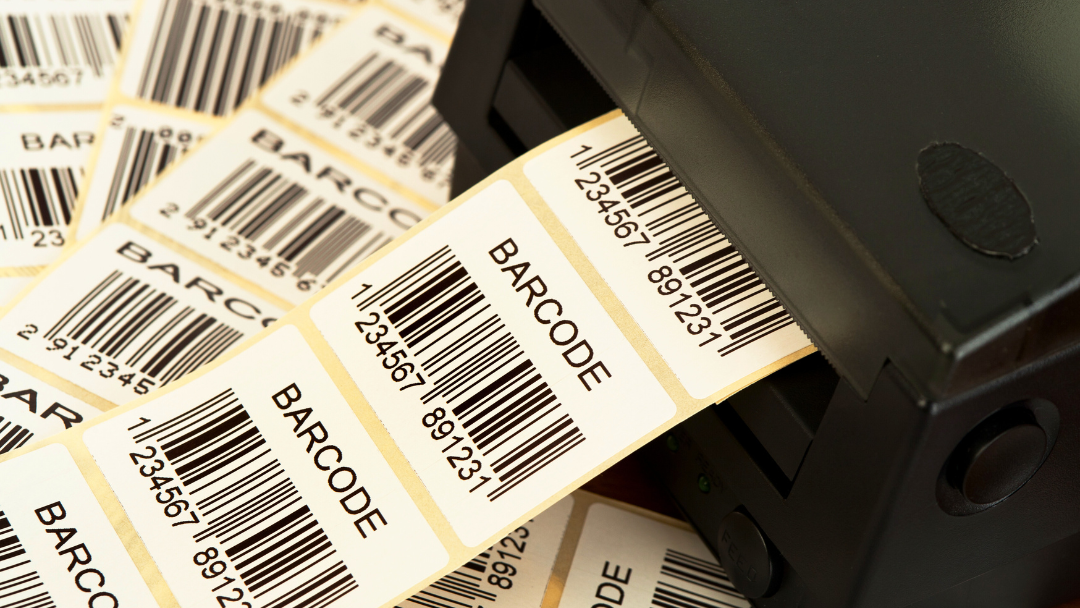What is a Barcode?
A barcode is a graphical representation of information that is optically readable by barcode scanners or cameras. It consists of a series of parallel lines, usually black and white, that vary in width and spacing. These lines represent different numbers and characters that encode specific data, such as product information, pricing, and inventory tracking. Barcodes are widely used in various industries for quickly and accurately identifying and tracking items.
In fact, barcodes are vital in modern business practices, enabling efficient inventory management, accurate data entry, improved customer service, and enhanced product traceability. Their widespread adoption has led to increased productivity, cost savings, and improved overall efficiency for companies across various sectors.
What are the types of Barcodes?
There are several types of barcodes used for different purposes. Here are some commonly used types of barcodes:
UPC (Universal Product Code): The most widely recognized barcode, used mainly in retail and grocery stores for product identification and tracking.
EAN (European Article Numbering): Similar to UPC, EAN is also used for product identification, particularly in Europe.
QR Code (Quick Response Code): A two-dimensional barcode that can store more data compared to traditional barcodes. QR codes are often used for marketing purposes, such as linking to websites or providing additional information about a product.
Code 39: A linear barcode commonly used in industrial and manufacturing applications. It allows the encoding of numbers, uppercase letters, and a few special characters.
Code 128: Another linear barcode that can encode a larger set of characters, including both uppercase and lowercase letters, numbers, and symbols. Code 128 is often used in supply chain management and logistics.
ITF (Interleaved 2 of 5): A numeric-only barcode used primarily for packaging and shipping purposes. It can encode a large amount of data in a relatively small space.
PDF417: A two-dimensional barcode capable of encoding large amounts of information. PDF417 barcodes are often used for IDs, driver’s licenses, and boarding passes.
Data Matrix: A two-dimensional barcode that can store a large amount of data in a small space. It is commonly used for small item tracking or for encoding information on electronic components.
These are just a few examples, and there are many other barcode types used in various industries and applications. The specific barcode type used depends on the requirements and purposes of the particular application.
What are Barcode Components?
Barcode components refer to the individual elements that make up a barcode and enable the system to encode and decode information. The main components of a barcode include:
Start/stop characters: These are the special characters placed at the beginning and end of a barcode. They indicate where the barcode starts and ends.
Quiet zone: A blank space surrounding the barcode that provides a clear area for the barcode reader to distinguish the barcode from its surroundings.
Bars and spaces: These are the dark and light elements that form the actual barcode. Each character in a barcode is represented by a specific pattern of bars and spaces.
Modules: Modules are the smallest unit of measurement in a barcode. They determine the width of each bar and space element within the barcode.
Checksum digit: Many barcodes include a checksum digit at the end to ensure the accuracy of the encoded data. It is calculated based on the preceding digits and allows for error detection.
Human readable text: Barcode labels often include human-readable text, such as the encoded data, product information, or any other relevant details.
Encoding standards: Various standards, such as UPC (Universal Product Code) or EAN (European Article Number), define how data is represented and encoded within a barcode. These standards set guidelines for the structure, length, and format of barcodes.
Barcode reader: The device used to scan and decode the barcode. It typically consists of a light source, a sensor, and a decoder to interpret the barcode information.
Barcode symbology: Different types of barcodes, such as UPC-A, QR Code, or Code 39, use specific variations in bar and space patterns to represent alphanumeric characters or other types of data.
Label material: The material on which the barcode is printed, such as paper, adhesive labels, or directly on products or packaging.
These components work together to create a unique pattern of bars and spaces that can be scanned and converted into readable data by a barcode reader.
How do Barcodes Work?
Barcodes work by using a combination of parallel lines and spaces of varying widths. These lines and spaces represent different characters or information that is encoded in the barcode. The barcode scanner emits light at a specific wavelength, which is then absorbed by the dark bars and reflected by the light spaces.
When the barcode scanner reads the barcode, it detects the reflection of light and converts it into an electrical signal. The scanner then analyzes the width of the lines and spaces, decoding them into the corresponding characters or information.
The most commonly used barcode format is the Universal Product Code (UPC), which is widely used in retail for products. Each barcode is unique to a particular product and contains information such as the manufacturer and product code.
Barcodes can be read by various devices, including barcode scanners, smartphones, or specialized software. These devices interpret the barcode’s information, enabling businesses to track inventory, manage sales, and improve efficiency in various industries.
Why Are Barcodes Important?
Barcodes are important for several reasons:
Inventory management: Barcodes are used to track and manage inventory in businesses. They provide a quick and accurate way to identify and count products, reducing errors and streamlining the inventory process.
Efficient checkout process: Barcodes on products enable a fast and accurate checkout process. Cashiers can simply scan the barcode to retrieve the price and product information, ensuring speedy transactions and reducing the chances of errors in pricing.
Product information: Barcodes contain essential information about a product, such as the manufacturer, product name, and other specific details. This information can be easily accessed and verified through the barcode, providing reliable and standardized data across various platforms.
Supply chain management: Barcodes play a crucial role in supply chain management, tracking the movement of goods from production to delivery. By scanning barcodes, companies can easily monitor and trace products, ensuring efficient and accurate inventory management throughout the supply chain.
Preventing counterfeiting: Barcodes can be used to prevent counterfeiting and ensure product authenticity. Unique barcodes assigned to each product make it easier to track and identify genuine items, protecting both businesses and consumers.
Product recalls: Barcodes are crucial in facilitating product recalls. By tracking the unique barcode associated with a particular product, companies can quickly identify and locate the affected items, minimizing the risk to consumers and efficiently managing the removal or repair process.
Overall, barcodes provide businesses with an effective way to streamline operations, improve efficiency, and ensure accurate and reliable data across various processes.
Can two products have the same barcode?
No, two products cannot have the same barcode. A barcode is a unique identifier assigned to each product to help in inventory management and tracking. If two products had the same barcode, it would lead to confusion and errors in the tracking system.
Summing Up:
Barcodes are a system of representing data in the form of a series of black and white lines, which can be scanned electronically. They are widely used in the business world for inventory management, product tracking, and pricing.
Barcode technology has revolutionized the efficiency and accuracy of business operations. By attaching barcodes to products, businesses can easily track inventory levels, reducing the risk of stockouts or overstocking. This allows companies to optimize their supply chain and ensure that the right products are available at the right time.
In addition, barcodes enable faster and more accurate data entry. Barcode scanners can read the information encoded in the barcode and automatically input it into a computer system, eliminating the need for manual data entry. This saves time and reduces the potential for human error.

